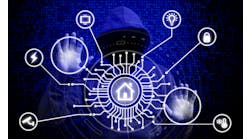Last month Vernon May and I decided to pose a few good questions on the use of the copper infrastructure to provide quality service to your customers. If you missed that column, take a look back before reading the answers below. How well did you do?
COPPER INFRASTRUCTURE QUESTIONS
QUESTION 1. When testing the cable pair, the digital multi-meter shows a 150 k ohm Ring ground. Using the resistance bridge feature set to 24-gauge on the technician’s multi-functional test set shows a distance to the fault of 700 feet. The cable map shows 300 feet of 24-gauge cable to a splice and the rest of the cable is 22 gauge. How far into the 22-gauge section into the fault? A. 250 feet; B. 460 feet; C. 640 feet; D. None of the above
ANSWER: C. 640 feet. The first 300 feet is 24-gauge subtracted from the 700 feet distance to fault leaves 400 feet of 24-gauge measurement that needs to be converted to 22-gauge. To convert from 400 feet of 24-gauge measurement to 22-gauge cable multiply 400 X 1.6 = 640 feet into the 22-gauge section.
QUESTION 2. Testing several cable pairs in a section of PIC cable with a DMM indicates crossed battery on ring conductors only. Tip conductors test clear >999 Meg ohms. The open meter shows a measurement that is longer than the section length. The root cause of the section failure is: A. Water in a splice or encapsulation; B. Water in the section; C. Sheath damage; D. All of the above
ANSWER: B. Water in the section. If the water was in a splice or encapsulation both tip and ring to ground would show crossed battery plus a high resistant short tip to ring. Sheath damage would show solid shorted and grounded cable pairs plus open conductors.
QUESTION 3. Testing a cable pair with a DMM the cable pair shows 999 Meg ohms tip to ring, tip to ground, and ring to ground. The longitudinal balance is 58dB. The open meter shows 3,800 feet tip to ring, 5,000 feet tip to ground, 5,000 feet ring to ground. No sync. The root cause is: A. Bridged tap; B. Load coil; C. Split cable pair; D. None of the above
ANSWER: C. Split cable pair. Tip and ring to ground normally measure less footage than tip to ring footage, but because the pair is split there is less capacitance and tip to ring measures short. A split cable pair will have an adverse effect on all other DSL customers on that DSLAM.
QUESTION 4. Sheath bonds should be torqued to:
ANSWER: A. 40 inch lbs.
DSL QUESTIONS
QUESTION 1. Digital Subscriber Line (DSL) technology is most like: A. Ethernet; B. MPLS; C. ATM
ANSWER: C. ATM. DSL started with the predominant ATM technology at the time. However, as the new standards were approved (ADSL2+, VDSL), DSL morphed into its own technology.
QUESTION 2. Bits per Bin (or Tone) indicate: A. Noise at Frequency; B. Attenuation at Frequency; C. Transmit Power at Frequency; D. All of the above
ANSWER: D. All of the above. Bits per bin (or bits per tone) is a valuable tool to determine how the DSL circuit is reacting to field stresses. With practice, all of the above can be determined at a glance.
QUESTION 3. Downstream Bit Rates are generally higher than Upstream Bit Rates because: A. The Upstream bits have to fight gravity; B. More Downstream bins are allocated than Upstream bins; C. The Upstream bits must travel through a different filter than the Downstream bits; D. All of the above
ANSWER: B. More Downstream bins are allocated than Upstream bins. There are synchronous (up and down at the same rate) VDSL profiles, but in general, more Downstream bins are available than Upstream bins.
QUESTION 4. Physical Copper Problems can impact: A. Modem Sync; B. Bit Rates; C. Circuit Reliability; D. All of the Above
ANSWER: D. All of the Above. Copper physical problems (like all Layer 1 problems) impact all of the layers above Layer 1. The symptom patterns can vary based on several factors.
QUESTION 5. High AM Radio Noise combined with high Power Influence indicates: A. Too many radio stations in your area; B. Sheath problems; C. Power Network Issues; D. All of the above
ANSWER: B. Sheath problems. Sheath problems (or bonding and grounding in general) can show up as AM radio noise or high power influence. Remember that the sheath is there to block external noise sources (among other things).
QUESTION 6. A defective modem can cause: A. Wireless Issues; B. DSL Issues; C. Ethernet Issues; D. All of the above
ANSWER: D. All of the above. We ask a lot from a complicated device generally purchased from the lowest bidder. Many things can go wrong at the modem, and the list above is not complete.
QUESTION 7. A good DSL port sync test at the DSLAM can hide: A. A weak port that will cause Rate/Reach DSL Bit Rate Issues; B. Ethernet Issues; C. Provisioning Issues; D. All of the above
ANSWER: A. A weak port that will cause Rate/Reach DSL Bit Rate Issues. Some ports work fine at the lower power levels, but fail when asked to push the signal through normal cable pair attenuation (requiring more power). To be sure a port is really good when testing at the DSLAM site, a line simulator or full roll of jumper wire between the port and the test set will expose this problem.
QUESTION 8. Which fault more negatively impacts DSL service at 10 Ohms? A. A high resistance open; B. A tip to ring resistance fault; C. A tip to ground or ring to ground
ANSWER: C. A tip to ground or ring to ground. A 10 ohm high open is bad, but a solid or near solid tip or ring ground kills DSL service completely. The pair under these conditions is so electrically unbalanced that noise counterbalancing (why electrical balance matters) is non-existent. A 10 ohm tip to ring short is also not good, but some level of service is normally possible over this fault.
QUESTION 9. Good DSL Sync, but no IP address indicates: A. A provisioning problem; B. A DSL problem; C. A Copper problem; D. All of the above
ANSWER: A. A provisioning problem. There are times when the number of IP addresses assigned don’t match the need, but in general, the modem or network cross-connects settings are wrong.
QUESTION 10. Good attenuation, good noise readings and low bit rates indicate: A. A defective modem; B. A bad splitter; C. A bad port; D. All of the above
ANSWER: B. A bad splitter. When we see bit loading avoiding groups of bins and neither noise nor attenuation can account for it, suspect a bad or double splitter. Often, a NID-based splitter is installed after a jack-based filter is already in place. The bad splitters/filters are mostly bad right out of the box.
QUESTION 11. When both US and DS bit rates are negatively impacted equally, it is an indication of: A. A defective modem; B. A bad port; C. A physical problem; D. All of the above
ANSWER: C. A physical problem. Upstream and Downstream traffic operate at different frequencies with different transmit and receive sites. Generally, physical problems (shorts, grounds, crosses, and open) cause problems on both Upstream and Downstream at the same time.
QUESTION 12. When there is no obvious root cause to a DSL problem, the first stop should be: A. At the Main Frame; B. At the DSLAM; C. At the Cross Connect Box; D. At the NID; E. At the Jack
ANSWER: D. At the NID, is what we currently believe. Though, our position on this has changed a few times over the years. The in-home network is so complicated now, that we believe that an "inside or outside" diagnostic in the beginning is beneficial.
QUESTION 13. Impulse noise can be caused by: A. Power company issues; B. Subscriber home wiring issues; C. Neighborhood home wiring issues; D. Appliances; E. Light Fixtures; F. All of the above
ANSWER: F. All of the above. Impulse noise is so difficult to find and fix because there are so many possible causes. All of the modern multi-testers can test for impulse noise, but the test set-up has to be right. Also, when you find the presence of impulse noise, finding the source can be a multi-day project.
Signing off
We hope you enjoyed the test and that it taught you something. If you have ideas for topics you would like us to cover, please let me know. Or if you have an interesting case of trouble you’d like to share or get opinions on, let us know. Email [email protected] or call 831.818.3930. If you are interested in information about our training, contact [email protected].
Vernon May has leveraged his 35+ years of service provider and vendor experience into that of trainer/coach, inventor, systems designer, program manager, product manager, and plant operations expert. He holds 2 US Patents, including #8,027,807 B2 on Remote DSL Circuit Evaluation. If you have questions about your DSL, contact him at 254.979.4749 or email [email protected], or visit Vernon May Solutions LLC at http://www.vmaysolutions.com.





